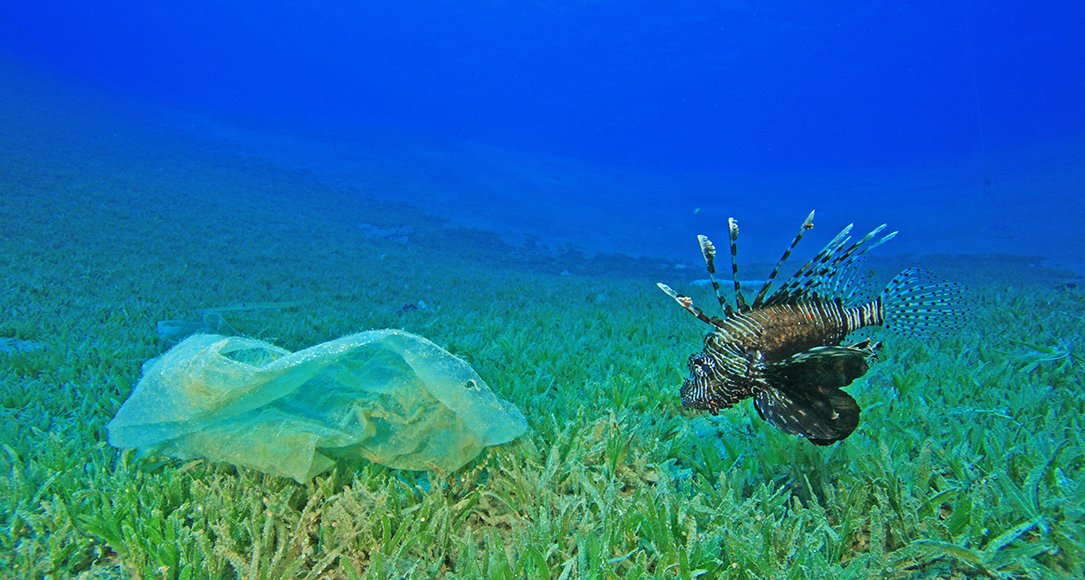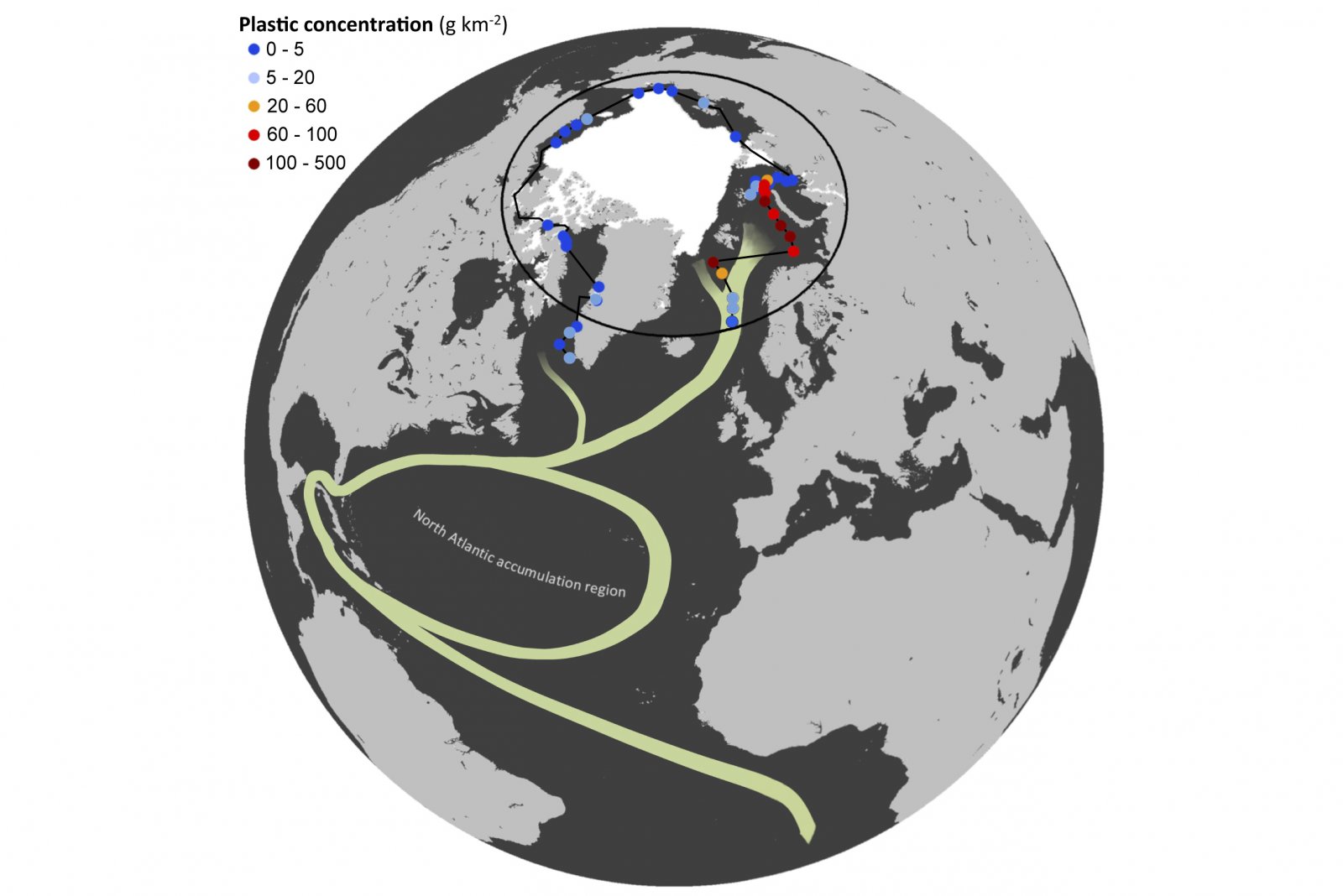Mapping plastic debris in the ocean

The Greenland and Barents seas have accumulated hundreds of tons of plastic debris originating from Europe and the US. The debris is composed of approximately 300 billion pieces, mainly fragments around the size of a grain of rice, which makes it very difficult to clean up. Scientists from Utrecht University and international colleagues found that plastic floating at the surface is only about 1% of all plastic dumped into the sea. They use a computer model to understand the whereabouts of the plastic. “We need to understand the dynamics and where the plastic is most disastrous to animals before we look at solutions”, says Dr Erik van Sebille, associate professor of Physical Oceanography at Utrecht University.
In 2017 Van Sebille and colleagues from seven countries created a map of floating plastic pollution in the Arctic. An area in the north of the Greenland and Barents seas appeared to contain quite high plastic concentrations. Van Sebille: “We discovered that the plastic in the Arctic originates from Europe and the US. It is our plastic that ends up there, so it is our responsibility to fix the problem.”
5 million tons of plastic
Researchers currently have a reasonably good understanding of how floating plastic moves around, Van Sebille explains. “But we’ve realised that you miss quite a lot if you focus only on floating plastic. There are an estimated 250,000 tons of plastic in the ocean, and each year, another 5 million tons wash into the ocean. That means that more than 99% of all of the plastic that has been dumped in the ocean is no longer floating on the surface. So where is it then? Part of it is on the ocean floor – we can observe it in core samples and from submersibles – and some of it washes ashore on beaches and coastlines. But a far more worrisome concern is that a lot of it is consumed by animals. Biologists find more and more animals – for example 80% of all sea bird species – with plastic in their stomachs.”
Arctic fauna
Plastic is a problem for local wildlife, as animals mistakenly eat it or become tangled in it, which damages their health and can kill them. Van Sebille: “The Arctic is one of the most pristine ecosystems we still have. And at the same time it is probably the ecosystem that is most under threat from climate change and sea ice melt. Any extra pressure on the animals in the Arctic, from plastic litter or other pollution, can be disastrous.” Once plastic is in the ocean, it breaks down into little pieces and becomes intermingled with algae, making it difficult to filter out.
The Arctic is one of the most pristine ecosystems we still have. And at the same time it is probably the ecosystem that is most under threat from climate change and sea ice melt.
Algae and storms
Van Sebille uses computer models to find out the whereabouts of the plastic. “We work with a reversed computer model. First we collect as many data points as possible from scientific literature – how much plastic is found at which locations? – and then we adjust our computer simulation so that the results correspond to the data. A lot of factors need to be taken into consideration, such as: how important are algae that grow on the plastic and make it heavier? How important are waves along the coast? How much plastic is washed ashore immediately with the next storm?” Van Sebille’s research is not just a computer project. “We also conduct simulations using wave tanks. We bring pieces of plastic in contact with the water and measure how waves, currents and winds transport them onto the beaches in our lab.”

Marine protected areas
In addition to plastic, Van Sebille also studies other things that spread in the ocean, such as bacteria, fish, and larvae. “For that, I collaborate not only with other oceanographers, but also with biologists and geologists. And we team up with scientists from international institutes, including the Universitat Politecnica de Catalunya in Barcelona, the Alfred Wegener Institute in Bremerhaven and the NGO Plastic Tide in London. For example, we are working on models of how organisms live in different parts of the ocean, and how that affects where you find these species. In this way, we are for example trying to figure out the best way to set up marine protected areas that will still be in the same place in fifty years.”
Sensitive ecosystems
Van Sebille's future research will take him to more regional projects, targeting plastic in key areas with sensitive ecosystems. He is currently exploring funding routes for a project on the Galapagos Islands, teaming up with local and regional stakeholders to make the Galápagos completely plastic free again.
Pathways to Sustainability
With rigor meets relevance as a guiding principle, Utrecht University pursues novel approaches to sustainability in close interaction with governance, business and the scientific community in its strategic research theme Pathways to Sustainability. Spanning many different disciplinary fields from the humanities, social and natural sciences, Pathways to Sustainability promotes transdisciplinary approaches with external partners to take up an active role in furthering a more sustainable society.

